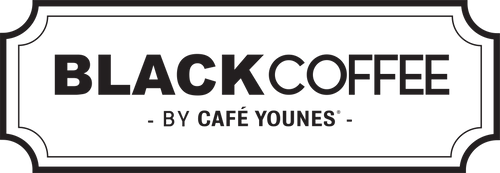BLACKCOFFEE by Café Younes uses speciality roasting techniques that create artisanal crafted roasts and blends perfected by the Diedrich roaster available in our Dubai store.
Determining the roast level of your coffee can be a confusing prospect when there are so many resources and different terms for roasting and roast profiles.
To clarify this matter, it helps to understand that there are three major degrees of roasting: light, medium and dark roasts.
Light Roast/American Roast
~ 400 - 410 °F, 205 - 210 °C
Also called New England Roast. At this point in the roast, the coffee beans are mid-first crack and the beans begin to truly smell like coffee. This light roast is drinkable and is often roasted to this level for cupping purposes to savor the origin of the beans. If you really want to be able to tell the difference between two coffees, roast them to this level and taste them side by side. Light roast is not commonly used for home or commercial brewing.
Medium Roast and Full City Roast
~ 430 - 440 °F, 221 - 226 °C
This formation of this roast is from the very beginning of second crack to a barely rolling second crack. The beans will not be oily yet, but will only have a slight element of oil. More smoke comes from the roaster during this stage and sometimes a nice big puff that indicates the beginning of the second crack. Full City Roast is commonly referred to as "medium" roast, although it can be considered close to a dark roast. At this point, there will be a balanced mixture in flavor between the individual origin of the coffee and the taste of the roasting process which is why it's so popular. BLACKCoffee recommends this roast for most coffees as it gives the best of both worlds.
Dark Roast
~ 445 - 460 °F, 229 - 237 °C
Dark roasts are when the beans have reached the end of the second crack. The cracking will be tapering off, but still rolling for the most part. The beans will be covered in a sheen of oil that is unmistakable. There will also be a lot of smoke coming from the roaster as the beans will start to change color and look more grey-black than brown. At this point, the coffee will have almost no origin flavor and will taste only like the "roast," meaning you could roast any coffee to French Roast and it would all taste almost the same. There will be a burnt undertone to the taste and the coffee will be much "thinner" in texture. As a result of this roast, there is very little acidity or brightness in this type of coffee.

